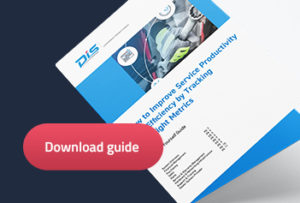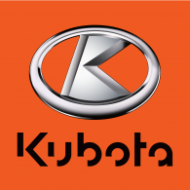Your dealership technicians might seem busy but the real question you should be asking is: are they productive and efficient in their work?
It doesn’t matter if your technicians clock in long hours. What matters is if their efforts contribute to the profitability of your dealership. The two key elements you need to focus on are:
- Technician productivity
- Technician efficiency
Productivity is calculated by the number of hours the technician works divided by the number of hours available. On the other hand, efficiency is determined by how long your technicians take to complete a job versus the standard time estimated to complete that job.
It’s safe to say that the more productive and efficient your technicians are, the more profitable your dealership will be.
According to a DIS survey of Ag dealers across North America, 26% of respondents anticipate tech labor shortages to be one of the biggest challenges they will face in 2022.
This makes it all the more important to fix service efficiencies.
Let’s take a look at how you can improve service productivity and efficiency at your dealership.
1. Schedule jobs in advance
Do you schedule job orders as the day progresses? This might be deterring your technicians’ productivity.
A huge aspect of improving service productivity is scheduling jobs before the start of every day. Doing this ensures you’ve addressed all the work orders and helps technicians meet deadlines.
It also makes them accountable and keeps them productive because they understand what’s expected of them and you’re able to determine how they’re spending their time.
It’s a good idea to use a service scheduling product to schedule jobs as it streamlines the process and gives you access to relevant data.
2. Monitor work order progress
One of the most effective ways to keep a check on service productivity is by monitoring job progress regularly. How do you do that? By making walkarounds part of your daily checklist.
As the name suggests, walkarounds involve managers checking in with technicians daily. This encourages regular communication, helps you identify productivity leaks, and expedites problem-solving thereby improving shop productivity.
It’s advisable to use a walkaround sheet to log progress so you don’t miss out on the parameters you’re supposed to monitor and can document your findings for future reference.
Read next: How Plevna Implement Manages Service on Across Locations and On the Road
3. Invest in the right technology
It’s alarming to note that workers spend 69 days annually on repetitive tasks costing $5 trillion in lost productivity.
The solution? Invest in the right dealership management software.
The idea is to automate administrative and repetitive tasks that don’t add value to your revenue. Technicians can focus on tasks that matter resulting in an increase in billable hours, efficiency and shop productivity.
For instance, instead of relying on notes and to-do lists, implement software to organize your tasks and stay on top of all the work orders. Technicians can then access and update work orders in one place.
Not only does this save time but it also reduces bottlenecks and improves customer experience. With 86% of buyers willing to pay more for a great customer experience, dealership management software is certainly an investment in long-term growth.
4. Establish flat rates
A flat rate is a set price for a job completed within a particular time. When the technician completes that job, they are paid that rate. As a dealer, you need to establish the amount of time that is required for a job and determine a fixed rate for it.
You can either determine that by referring to labor guides, study industry standards, or set your own flat rates depending on past experience.
How does this impact technician efficiency?
As technicians are only paid for the time flagged, they are motivated to be more productive and efficient in completing the job. So, if a job takes 3 hours to complete and a technician completes it in 2 hours, they get paid the flat rate and are able to take on the next job order.
5. Improve documentation
Over 21% of daily productivity loss can be attributed to document challenges.
From not being able to find key documents and having to recreate them to improper naming and saving conventions, many industries bear the brunt of poor documentation guidelines.
Encourage detailed service documentation. Knowing how your technicians are spending their time goes a long way in optimizing service efficiency.
Work order documents generally include:
- Company name and contact information
- Work order title
- Key dates
- Name of technician
- Job description
This essential document outlines the work orders in detail and the amount of time taken to complete them. It also takes into account bottlenecks and productivity leaks they encounter along the way.
You can refer to these documents to identify gaps and optimize dealership performance.
Want to learn more?
Before you put these best practices into action, measure the right productivity and efficiency metrics first because if you can measure it, you can manage it.
We’ve collaborated with Kelly Mathison, Trainer and Management Consultant with the WEDA Dealer Institute to put together a guide on measuring service productivity and increasing technician efficiency.
Read this guide to learn more about:
- Why labor inventory is your service department’s biggest commodity
- Key metrics to measure service productivity and efficiency
- Best practices to improve service department performance

![5 Building Blocks for Dealership Management Success [Video]](https://www.discorp.com/wp-content/uploads/2024/07/Untitled-design-22-190x190.png)


